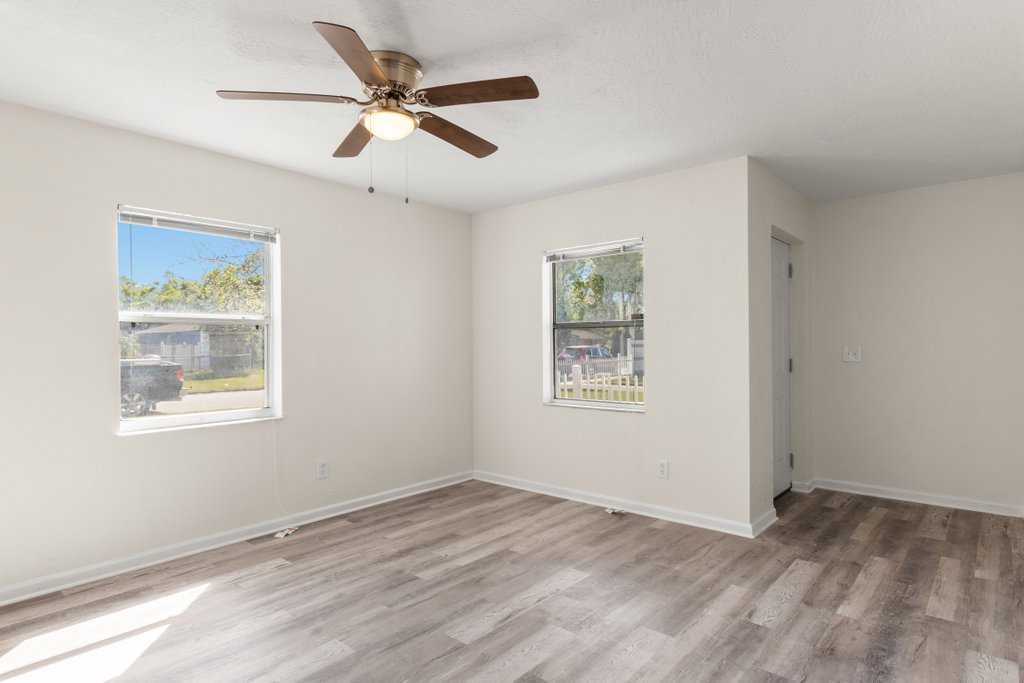
A Handyman’s Guide to Preventing Mold and Mildew in Your Home
Mold and mildew are common household issues that can cause significant damage to your home and pose health risks to you and your family. These fungi thrive in damp, humid environments and can quickly spread if not properly addressed. Preventing mold and mildew requires a proactive approach to home maintenance, and with the right strategies, you can keep your home safe and healthy. This article will provide a handyman’s guide to preventing mold and mildew in your home, focusing on practical tips and solutions.
Understanding Mold and Mildew
Before diving into prevention strategies, it’s important to understand what mold and mildew are and why they’re problematic. Mold and mildew are both types of fungi that grow in warm, moist environments. While mildew typically appears as a thin, white or grayish film on surfaces, mold can be black, green, or even blue, and tends to be thicker and more destructive.
Mold and mildew can cause a range of issues, from discoloration and structural damage to health problems such as allergies, respiratory issues, and even infections. Because of this, preventing their growth is essential for maintaining a healthy home environment.
1. Control Humidity Levels
One of the most effective ways to prevent mold and mildew is to control the humidity levels in your home. Mold thrives in environments with humidity levels above 60%, so keeping the humidity below this threshold is key.
How to Control Humidity:
- Use Dehumidifiers: Dehumidifiers are a great tool for reducing moisture in the air, especially in areas prone to dampness, such as basements, bathrooms, and laundry rooms.
- Ventilate Properly: Ensure that areas like kitchens and bathrooms are well-ventilated. Use exhaust fans during and after cooking or showering to remove excess moisture. If your home lacks adequate ventilation, consider having a handyman install additional exhaust fans or ventilation systems.
- Monitor Humidity Levels: Invest in a hygrometer to monitor the humidity levels in your home. If you notice levels consistently above 60%, take steps to reduce moisture.
2. Fix Leaks Promptly
Water leaks are a major contributor to mold and mildew growth. Even small leaks can create the perfect conditions for these fungi to thrive. Regularly inspecting your home for leaks and addressing them promptly is crucial.
Areas to Inspect:
- Plumbing: Check under sinks, around toilets, and near washing machines for any signs of leaks. If you notice water stains, puddles, or dripping, call a handyman to fix the issue immediately.
- Roof and Gutters: Inspect your roof for damaged or missing shingles and ensure gutters are clear of debris to prevent water from pooling and seeping into your home. A handyman can help with roof repairs and gutter maintenance.
- Windows and Doors: Check for leaks around windows and doors, especially after heavy rain. If you find any, seal them with weatherstripping or caulk.
3. Improve Air Circulation
Proper air circulation can help prevent moisture buildup, which in turn reduces the risk of mold and mildew. Stagnant air allows moisture to accumulate, creating an ideal environment for fungal growth.
How to Improve Air Circulation:
- Use Ceiling Fans: Ceiling fans help circulate air throughout your home, reducing the likelihood of moisture buildup. Make sure to use them regularly, especially in areas prone to dampness.
- Open Windows: Whenever possible, open windows to let fresh air in and allow moisture to escape. This is particularly important after activities that generate moisture, such as cooking, showering, or doing laundry.
- Keep Furniture Away from Walls: Ensure that furniture is placed a few inches away from walls to allow air to circulate freely and prevent moisture from getting trapped.
4. Dry Wet Areas Immediately
Mold and mildew can start growing within 24-48 hours in damp conditions, so it’s essential to dry wet areas as soon as possible. Whether it’s a spill, a wet carpet, or a flood, taking immediate action can prevent mold growth.
Steps to Take:
- Wipe Up Spills: Clean up any liquid spills on floors, countertops, or other surfaces right away.
- Dry Wet Carpets: If carpets or rugs get wet, dry them as quickly as possible using fans, a wet/dry vacuum, or a dehumidifier.
- Address Flooding Promptly: In the event of flooding, remove standing water immediately and dry the affected area thoroughly. A handyman can assist with water extraction and drying techniques.
5. Use Mold-Resistant Products
When renovating or building, consider using mold-resistant products to reduce the likelihood of mold and mildew growth. These products are designed to withstand moisture and inhibit fungal growth.
Mold-Resistant Products to Consider:
- Mold-Resistant Drywall: This type of drywall has a special coating that resists moisture, making it ideal for bathrooms, basements, and kitchens.
- Mold-Resistant Paint: Mold-resistant paint contains antimicrobial agents that prevent mold and mildew from growing on painted surfaces. It’s particularly useful in high-humidity areas.
- Mold-Resistant Caulk: Use mold-resistant caulk around sinks, bathtubs, and windows to seal joints and prevent moisture from seeping in.
6. Regularly Clean and Disinfect
Regular cleaning and disinfecting can help prevent mold and mildew from taking hold in your home. Focus on areas that are prone to moisture and warmth, as these are the most likely to harbor mold.
Cleaning Tips:
- Use Mold-Killing Products: Clean bathrooms, kitchens, and other damp areas with mold-killing cleaners or a solution of vinegar and water.
- Clean Air Conditioners: Mold can grow in air conditioners if they’re not properly maintained. Regularly clean or replace the filters and ensure the unit is draining properly.
- Inspect and Clean Hidden Areas: Mold often grows in hidden areas, such as behind appliances, under sinks, or in crawl spaces. Regularly inspect these areas and clean them if necessary.
Conclusion
Preventing mold and mildew in your home requires a proactive approach and regular maintenance. By controlling humidity, fixing leaks, improving air circulation, drying wet areas immediately, using mold-resistant products, and cleaning regularly, you can significantly reduce the risk of mold and mildew growth. A skilled handyman can assist with many of these tasks, ensuring that your home remains safe, healthy, and mold-free. By staying vigilant and addressing potential issues promptly, you can protect your home and your family from the harmful effects of mold and mildew.
